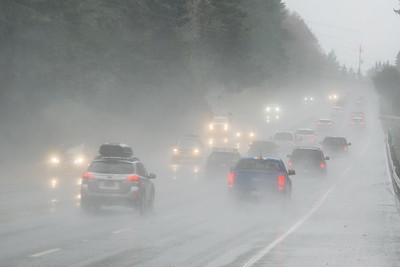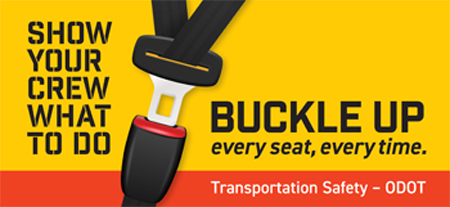Wet and Wintery Weather Driving Tips

The
AAA Wet Weather Driving Tips webpage reminds everyone that safety starts before you drive, and your goal should be to see and be seen. Replace windshield wiper inserts that leave streaks or don’t clear the glass in a single swipe. Make sure all headlights, taillights, brake lights and turn signals are properly functioning so other drivers will see you during downpours. Turn on your headlights whenever you drive.
Proper tire tread depth and inflation are imperative to maintaining good traction on wet roadways. Check tread depth with a quarter inserted upside down into the tire groove. If you can see above Washington’s head, start shopping for new tires. Check each tire’s pressure, including the spare, at least once a month… and be sure to check the pressure when the tires are cold.
Avoid Cruise Control
Most modern cars feature cruise control. This feature works great in dry conditions, but when used in wet conditions, the chance of losing control of the vehicle can increase. To prevent loss of traction, the driver may need to reduce the car’s speed by lifting off the accelerator, which cannot be accomplished when cruise control is engaged.
When driving in wet-weather conditions, it is important to concentrate fully on every aspect of driving. Avoiding cruise control will allow the driver more options to choose from when responding to a potential loss-of-traction situation, thus maximizing your safety.
Slow Down and Leave Room
Slowing down during wet weather driving can be critical to reducing a car’s chance of hydroplaning, when the tires rise up on a film of water. With as little as 1/12 inch of water on the road, tires have to displace a gallon of water per second to keep the rubber meeting the road. Drivers should reduce their speed to correspond to the amount of water on the roadway. At speeds as low as 35 mph, new tires can still lose some contact with the roadway.
To reduce chances of hydroplaning, drivers should slow down, avoid hard braking or turning sharply and drive in the tracks of the vehicle ahead of you. Also, it’s important for motorists to allow ample stopping distance between cars by increasing the following distance of the vehicle in front of them and beginning to slow down to stop for intersections, turns and other traffic early.
Overall you want to be extra cautious in wet weather. Slow down, avoid hard braking or turning sharply and allow ample stopping distance between you and the cars in front of you. Also, do these things one at a time. Brake, then turn, then accelerate.
Visit the webpages listed below for more information and resources.
ODOT Winter Driving Tips webpage
ODOT Transportation Safety Office Lights and Swipes webpage
National Traffic Safety Institute 6 Safety Tips for Driving in Heavy Rain webpage
Pedestrian Safety
Oregonians Stand Out
Most pedestrian fatalities occur at dusk or at night when visibility is low. Help prevent these tragedies by following these tips:
As a driver:
• Be extra vigilant at dusk—it’s harder to see pedestrians.
• Watch for pedestrians at corners and mid-block crosswalks.
• Slow down and scan for movement in the dark.
As a pedestrian:
• Avoid dark clothing that blends into your surroundings. Wear bright colors during the day and light or reflective gear at night.
• Carry a flashlight or use a headlamp when it’s dark, rainy, foggy, or overcast.
Together, we can make Oregon’s streets safer for everyone.
Buckle Up - every seat, every time.
